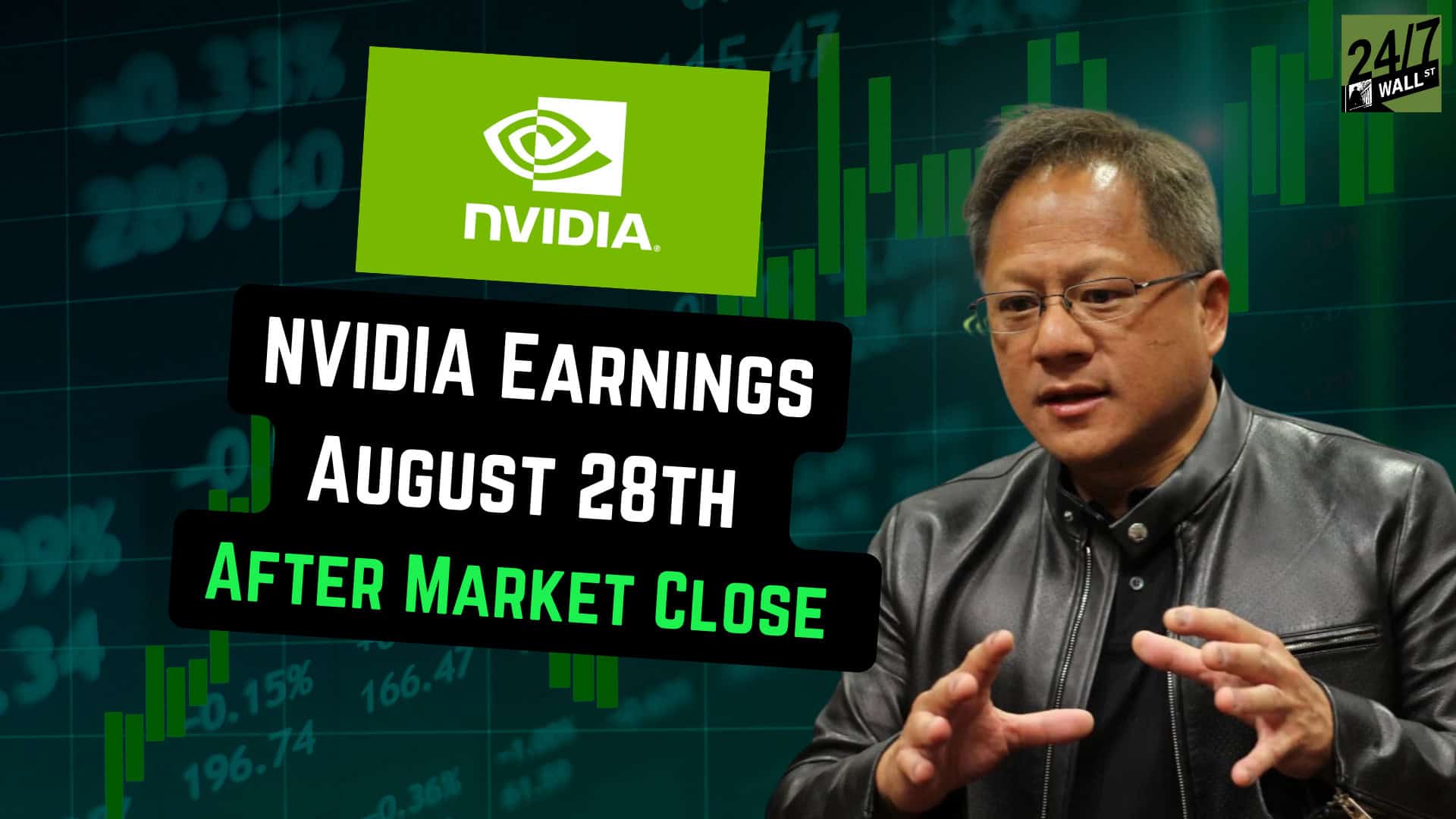
Nvidia’s (NASDAQ:NVDA) reported its second-quarter results after market close on Wednesday, August 28. As has been the case with previous earnings reports, Nvidia blew Wall Street expectations out of the water. But this earnings beat and guidance raise wasn’t to the same degree some investors had expected, with the company appearing to have missed the whisper numbers on this report. In after hours trading on Wednesday, the stock traded 7% lower. As of mid-day Thursday, Nvidia had already made up some of these losses, down less than 4%.
The AI chip maker exceeded expectations, with revenue from AI data centers more than doubling. Despite this, shares fell due to high investor expectations, given the stock’s 150% rise this year. Nvidia’s bottom-line beat (68 cents of EPS versus forecasts of 65 cents) also provided support to bulls betting on a fundamentals-driven rally continuing in this name. But some concerns around margin deterioration and the company’s Blackwell chips deliveries have some investors appearing to take a more measured approach to this stock.
With NVDA stock now trading around $120 per share at the time of writing, let’s dive into whether the run to $200 is over, or if the market is making much ado about nothing.
Another Quarter of Impressive Earnings

Nvidia’s earnings exceeded Wall Street expectations, with EPS at 68 cents and revenue at $30.04 billion, surpassing forecasts. Despite strong results and a revenue outlook of $32.5 billion for the current quarter, shares fell nearly 8% in after-hours trading. Revenue growth of 122% year-over-year is incredible, and there are simply few companies at this scale that can provide this kind of growth, which is what makes Nvidia among the most-traded stocks in the market (both in terms of shares traded as well as in the options market).
Nvidia’s net income surged to $16.6 billion, or 67 cents per share, up from $6.18 billion, or 25 cents per share, the previous year. The company has been a major beneficiary of the AI boom, with mega-cap tech stocks of all stripes among Nvidia’s core clientele. To a significant degree, Nvidia’s earnings can act as a bellwether for how spending from tech giants is materializing, and thus far, it appears spending isn’t slowing, as many bears had predicted could happen this year.
Nvidia’s future growth is going to continue to be driven by its AI chips and related products and services. Most investor attention right now is on the company’s recently-announced Blackwell chips, which should replace some of the company’s existing demand for its H100 and H200 chips. The higher-priced chips have already started being sold in test batches, with some concern around a slower-than-expected rollout this year also hampering the stock today.
Looking Forward

CFO Colette Kress projected “several billion dollars” in Blackwell revenue for the fourth quarter. This projection can be taken a number of different ways – given the complexity of these chips, that’s a comparatively fast rollout, given how recently these chips were initially announced. However, many in the market appear to have priced in much more substantial top and bottom-line earnings impact moving forward, hampering this stock’s performance today.
Nvidia CEO Jensen Huang confirmed that the mask changes for the Blackwell chip were completed without affecting functionality. He clarified that production would begin in Q4, not just the start of shipping. Nvidia anticipates strong demand for its current Hopper chip over the next two quarters, while Blackwell remains in short supply despite high anticipation.
Some Wall Street banks have predicted that Nvidia could earn $5 in EPS next year (for calendar 2025), driven by an upcoming Blackwell supercylce. Of course, these delays and the potential for a slower rollout can hurt this projection. But if it is indeed the case that Nvidia can produce $5 per share in earnings next year, a valuation of 40-times earnings would get NVDA stock to the $200 price point. That’s a reasonable estimate, considering Nvidia’s current trailing multiple is around 56-times, and it’s traded at a much higher premium in the past.
That said, the question is whether such a multiple may be warranted, particularly if gross margins continue to decline. This quarter, Nvidia reported slight gross margin degradation, but there are plenty of investors out there who think that the upcoming Blackwell chips could provide a boon to margins moving forward. I think if margins do head higher, this is a stock that could easily support a 40-times earnings multiple, or higher, next year.
Another Massive Buyback Raising Eyebrows

Given how high Nvidia’s stock has soared, some investors may certainly be wondering why Nvidia’s board approved a $50 billion stock buyback on Wednesday. Indeed, companies that are growing as fast as Nvidia are may want to put this capital to work investing in their own businesses and earning much higher returns than simply returning capital to existing shareholders. That’s one point of view I think is part of the narrative around why Nvidia is trading lower in Thursday’s session.
That said, this buyback does signal to the market that Nvidia’s management team believes it’s simply spitting off too much cash relative to its Capex forecasts, and can deliver returns to investors. For those who have held Nvidia stock for the long-term, this announcement may be welcome. We’ll have to see if the company continues to buy back its stock heavily, and what the market reaction will be to such announcements. But for now, this is another factor I think investors will want to pay close attention to.
Nvidia Still Looks Like a Buy On This Dip

The AI revolution is clearly continuing in earnest, with spending from big tech companies remaining high as the race to develop new technologies continues. Questions around Nvidia’s Blackwell chip rollout will continue, and there are certainly concerns on the margin front which are pressuring EPS projections for next year. But as mentioned, I think a 40-times multiple at $5 per share in earnings is certainly a likely outcome for Nvidia next year, which would get the stock to a $200 per share valuation.
A lot needs to go right for that to happen, to be sure. But it’s been true for a very long time that Nvidia is a company that investors have only kicked themselves for not buying on dips. Today’s dip could be one of those opportunities.
Thank you for reading! Have some feedback for us?
Contact the 24/7 Wall St. editorial team.





